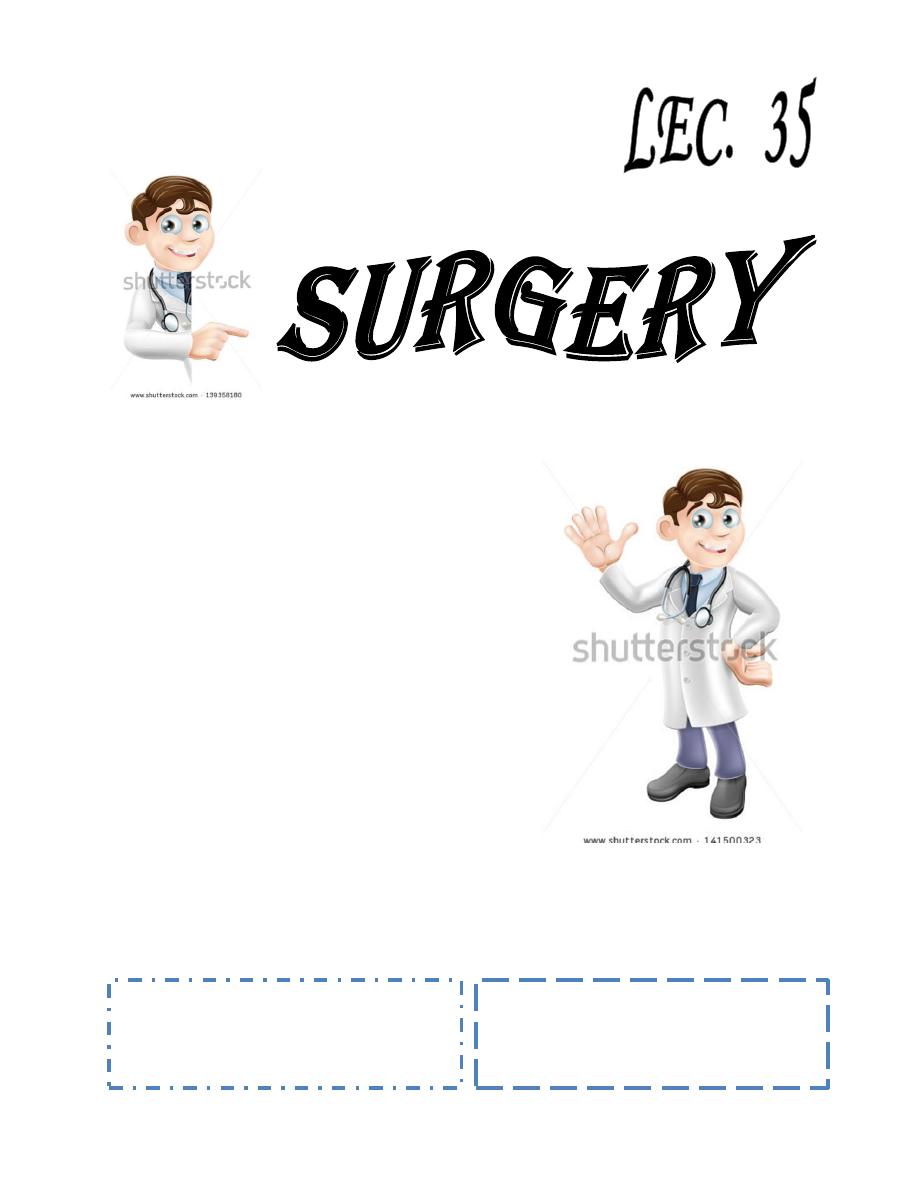
Baghdad College of Medicine / 4
th
grade
Student’s Name :
Dr. Tharwat Edrees
Lec. 2
Thyroid Gland
Tues. 23 / 2 / 2016
DONE BY : Ali Kareem
مكتب اشور
لالستنساخ
2015 – 2016

Thyroid Gland Dr.Tharwat Edrees
23-2-2016
2
©Ali Kareem 2015-2016
2. Multinodular toxic goiter
A. Non operative treatment:
Antithyroid drugs very uncommonly induce remission. Radioactive iodine is the
definitive treatment in those with small goiters, absence of pressure symptoms, old
patients , contraindications to surgery., or those who refuse surgery.
B. operation is indicated in :
Large goiters ; with pressure symptoms and it is the treatment of choice in toxic
MNG. Total or near total thyroidectomy usually leads to permanent
hypothyroidism which requires replacement therapy by thyroxine for life.
3. Solitary toxic nodule :
Radioactive iodine is the best option especially for those above 45 years because
only the nodule will take iodine and the remainder of the gland will remain
functioning.
Surgery is indicated in younger patients where it involves excision of the nodule
together with lobe in which it is contained.
Thyrotoxicosis during pregnancy :
* Radio iodine is strictly contraindicated
* Surgery during second and third trimester is safe
* Antithyroid drugs used carefully are usually safe (except in the 1
st
trimester not
used) .
Preparation of thyrotoxic patient for surgery
1.
Carbimazole 30-40 mg /day is given alone for 8-12 weeks until the patient
becomes euthryoid clinically and hormones level s (T3 , T4 , TSH) return to
normal .
2.
Carbimazole 30-40mg /day + proranolol 40~80mg/ day for 10-14 days prior
to surgery .
3.
Propranolol 40-80 mg/day for 10-14 days prior to surgery. Propranolol will
abolish the clinical manifestation of the toxic state by acting on target
organs and not on the gland itself.
** Don’t give any form of antipyretic drugs for a thyrotoxic patient because this
drug will compete with thyroxine for protein-binding in the plasma and that will
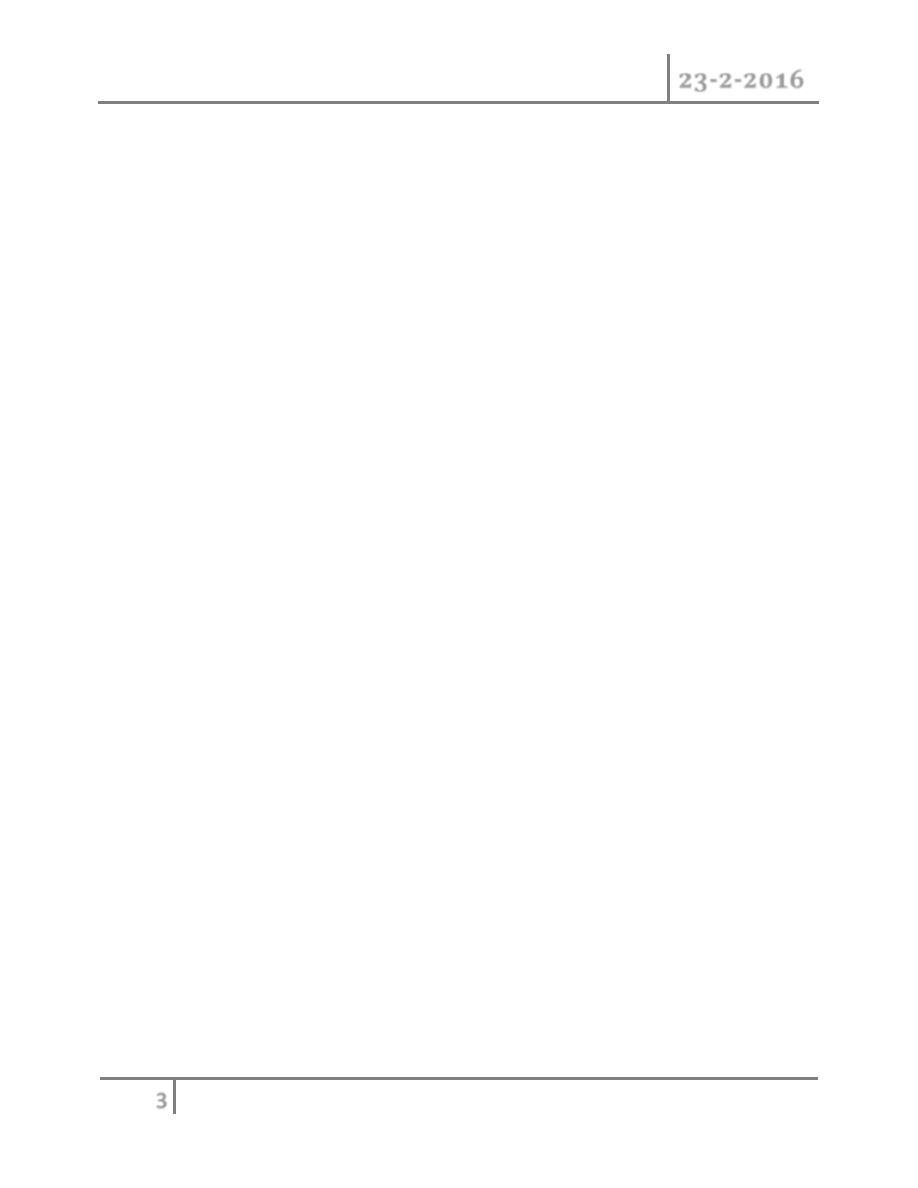
Thyroid Gland Dr.Tharwat Edrees
23-2-2016
3
©Ali Kareem 2015-2016
results in more free thyroxine results in worsening the case . rather than drugs use
cold sponges , hydrocortisone .
Preoperative investigations that should be done before thyroid surgery
1.
Thyroid function tests
2.
Indirect larngoscopy
3.
Thyroid antibodies
4.
Serum calcium estimation
5.
An isotope scan in toxic MNG
Postoperative complications
1. Early :
a) Hemorrhage : lead to tension hematoma deep to the cervical fascia. Usually
due to slipping of ligature on the Superior Thyroid Artery the patient should
be taken to theater and operation should be done under GA to control
bleeding. A milder form of bleeding leading to subcutaneous hematoma or
seroma could be aspirated or evacuated under local anesthesia.
b) Respiratory obstruction : mostly due to laryngeal edema which is the
consequence of tension hematoma . Very rarely obstruction is due to
collapse or kink of trachea . trauma to the larynx by the anesthesia tube or
surgical manipulation are contributory factors. Treatment by steroids and
reintubation for few days or tracheostomy .
c) Laryngeal nerve paralysis : may be unilateral or bilateral .. transient or
permanent . if one nerve is affected there will be horseness of voice but if
both nerve are affected there will be suffocation and permanent
tracheostomy is needed which is very rare .
d) Parathyroid insufficiency : 0.5% this is due to surgical removal of
parathyroid glands or infarction due to injury to its end artery . present after
2-5 days following operation . there will be positive Chvostek’s sign and
Trousseau’s sign .
e) Thyrotoxic crisis : acute exacerbation of hyperthyroidism. It occurs when
thyrotoxic patient is not adequately prepared for surgery . Clinically the
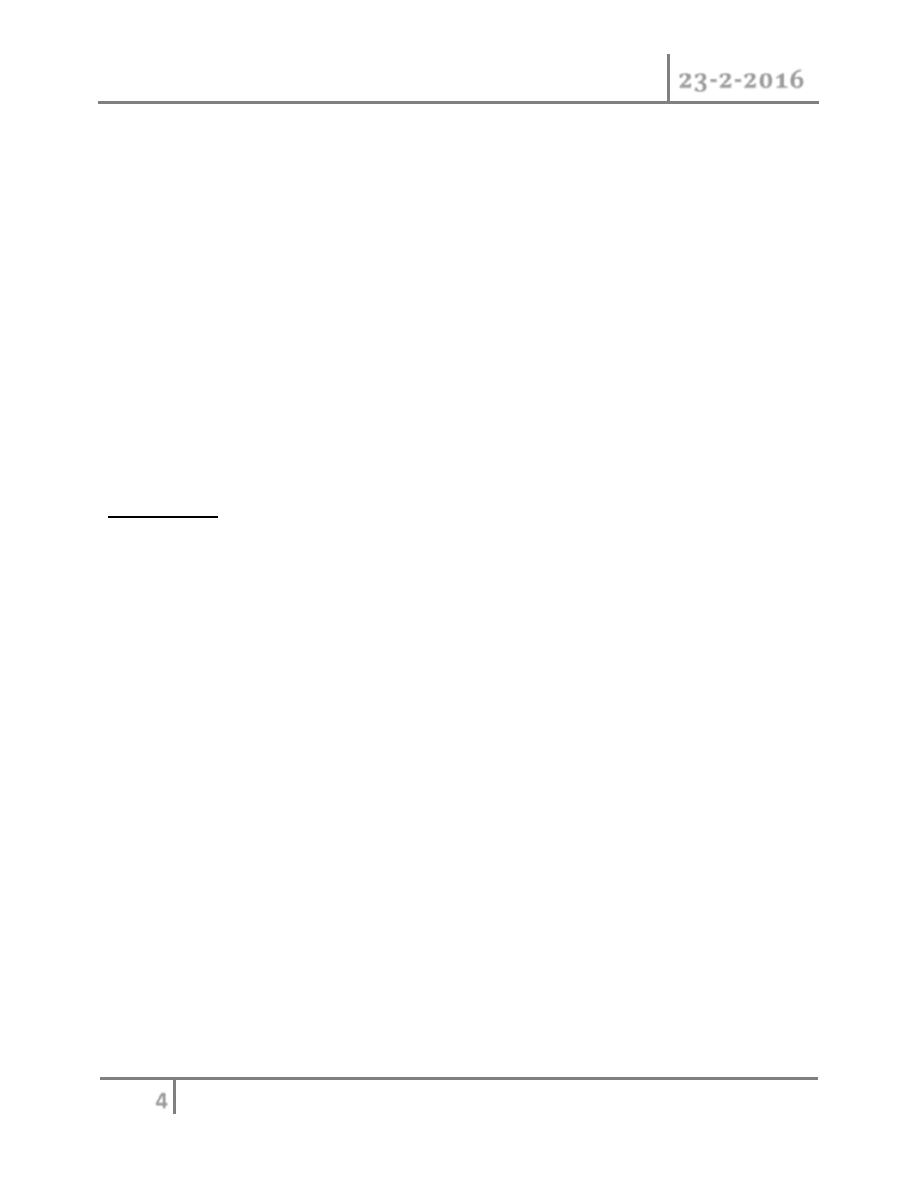
Thyroid Gland Dr.Tharwat Edrees
23-2-2016
4
©Ali Kareem 2015-2016
patient becomes dehydrated, restless and hyperpyrexic . Treatment by cold
I.V. fluids ,cooling the patient , administration of O2 , diuretics for heart
failure , digoxin for uncontrolled atrial fibrillation, sedation and
intravenous hydrocortisone. Specific treatment by carbimazole and lugols
iodine 10 drops 8-hourly by mouth. Propranolol could be given as 40 mg 6
hourly orally or iv 1-2mg slowly.
f) Wound infection
2. Late complications :
a) Hypertrophic or keloid scar.
b) Stitch granuloma
c) Hypothyroidism
Thyroiditis
Hashimotos's thyroiditis
Autoimmune disease of unknown cause . the thyroid is diffusely infiltrated by
lymphoid and plasma cells. in the early stages there may be thyrotoxicosis but
usually end with hypothyroidism. The gland is diffusely enlarged ..firm with
irregular surface. Titers of Abs against thyroglobulin and thyroid microsome are
markedly elevated. FNA is used to confirm diagnosis. Management by lifelong
thyroxine replacement.
De Quervain's thyroididtis
Viral infection leading to acute inflammatory reaction with histeocytes,
multinucleated giant cells and granuloma formation. Clinically there is acute pain
in the neck and tender enlarged gland. It is selflimiting and treated by analgesic
and NSAIDs
Reidel's thyroiditis
Reidel’s thyroiditis is very rare , accounting for 0.5% of goiters .
Thyroid tissue is replaced by cellular fibrous tissue , which infiltrates through the
capsule into muscles and adjacent structures .
The goiter may be uni. Or bilateral and is very hard and fixed .
Biopsy should be taken to confirm the diagnosis .
Treatment is with high dose steroids and thyroxine replacement .

Thyroid Gland Dr.Tharwat Edrees
23-2-2016
5
©Ali Kareem 2015-2016
Neoplasm of thyroid gland
Benign:
Follicular adenoma present as solitary nodule. The only difference between
follicular adenoma and carcinoma is the invasion of the capsule , so the diagnosis
depend on histological examination . Treatment by wide local excision
( lobectomy ) .
It is doubtful if there is an entity as papillary adenoma and all papillary tumors
should be considered as malignant , even if it is encapsulated .
Malignant tumors
1. Differentiated ( origin from foillcular cells)
Papillary carcinoma- 60%
Follicular carcinoma - 20%
2. Undifferentiated ( anaplastic ) 10%
3. Medullary carcinoma ( origin from parafollicular cells ) 5%
4. Lymphoma 5%
5. Secondary
Papillary carcinoma
Slow growing with good prognosis. Mostly related to irradiation before 5 years of
age. Related to ret/PTC I or ret/PTC3 Ags .
The growth is (multifocal with finger like tumor papillae present histologically .
there are typical psammoma bodies. The tumor invades lymphatics and over 50%
of patients have cervical lymph node involvement at presentation. Blood born
metastasis is unusual.
The patient is euthryoid, and ultrasound shows a solid lesion with enlarged
cervical lymph nodes. The diagnostic investigation is FNA which shows papillary -
configuration.
Management:
1 -The minimal procedure is total thyroid lobectomy with resection of the isthmus
followed by thyroid suppression by the thyroxine .

Thyroid Gland Dr.Tharwat Edrees
23-2-2016
6
©Ali Kareem 2015-2016
2- Total thyroidectomy followed by Iodine 131 for therapeutic ablation.
In case of cervical lymph node metastasis all the pretracheal, paratracheal or
lymph nodes in the jugular chain should be removed . If the jugular nodes are
extensively involved, a modified neck dissection should be carried out .
It is standard practice to give thyroxine in a dose of 0.1 to 0.2 mg daily to
suppress TSH production .
Following surgery a whole body radio-iodine scan should be done to detect
metastatic lesions which are treated by large doses of radio-iodine .
Follicular Carcinoma
Usually solitary nodule with invasion of the capsule and lymph node involvement
is much less common than in papillary carcinoma, blood-born metastasis are twice
as common as in papillary carcinoma.
Management:
1- Lobectomy and resection of the isthmus with ablation with radio iodine and
permanent thyroxine replacement.
2- Total or near total thyroidectomy followed by radio-iodine ablation and
thyroxine replacement.
Most differentiated tumors produce thyroglobulin therefore it is useful as a
postoperative tumor marker, Therefore annual measurement of thyroglobulin is
used by many centers for follow up.
Undifferentiated Carcinoma :
Usually occur in elderly women and are believed to arise from previously
unrecognized differentiated tumors, they are more common in endemic goiter
areas.
Clinically there may be a long standing goiter which has recently increased in size
with possibly pressure symptoms , the gland is hard woody with fixation to the
surrounding structures , can be diagnosed by FNAC or Open Biopsy with excision
of as much as possible of the tumor especially the isthmus and treated by external
beam radiotherapy.
It has a very poor prognosis.
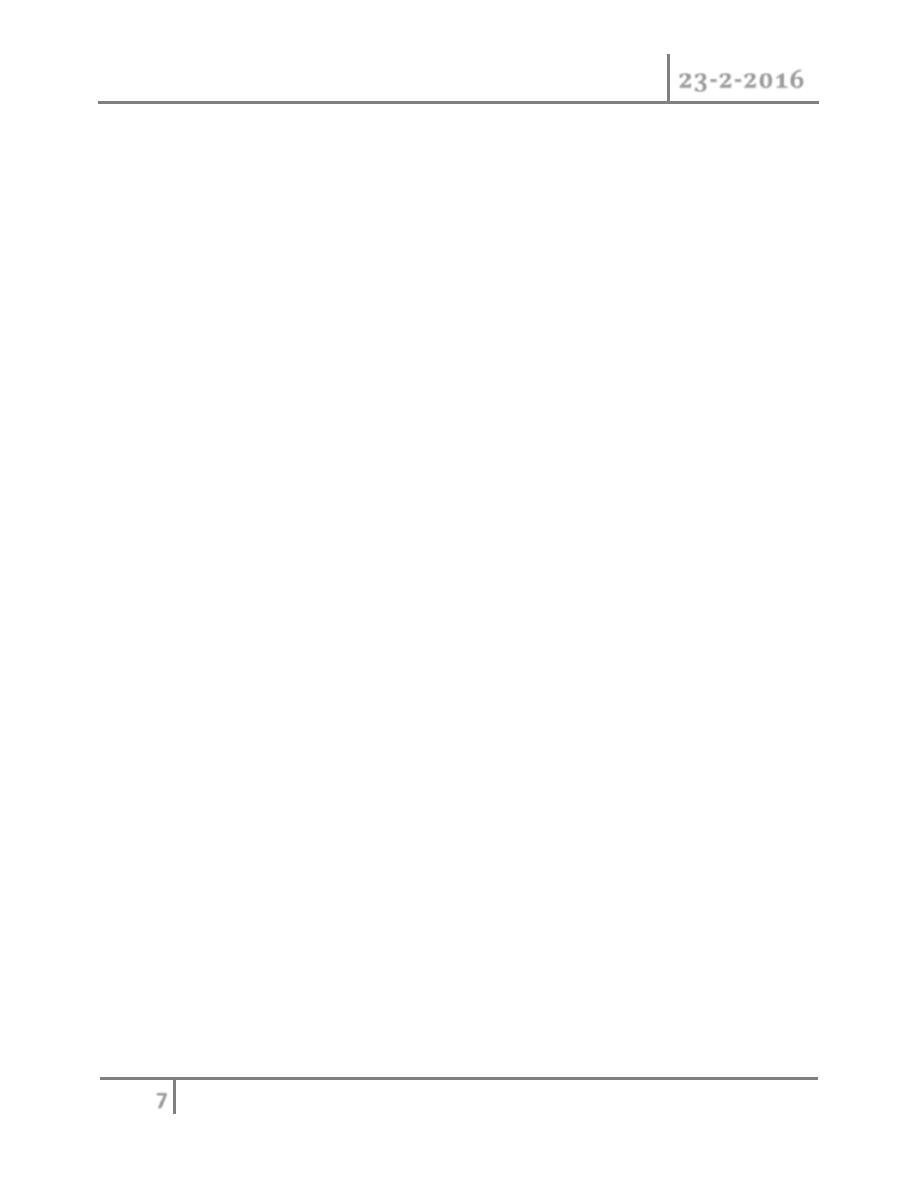
Thyroid Gland Dr.Tharwat Edrees
23-2-2016
7
©Ali Kareem 2015-2016
Medullary Carcinoma :
Tumors of the parafollicular ( C-cells ) derived from the neural crest which means
that they produce calcitonin ( more than 0.08 ng/ml ) which is considered as a very
good tumor marker in the follow up of those patients.
75% of these tumors are sporadic while 25% have genetic basis.
And it is inherited in an autosomal dominant manner and often multifocal and
associated with other endocrine disorders (MEN II ) usually presented as thyroid
nodule or lymph node enlargement in the neck and blood examination shows
raised calcitonin and the diagnosis is confirmed by FNAC .
Management by total thyroidectomy and thyroid replacement therapy.
** Some notes about Thyroglossal cyst :
Normally the thyroid gland descends early in life from the base of the tongue
towards its position in the lower neck with the isthmus lying over the 2
nd
and 3
rd
tracheal rings . this cyst represent a persistence of this track and may therefore be
found anywhere in or adjacent to the midline from the tongue base to the thyroid
isthmus .
Clinical features
Classically the cyst moves upwards on swallowing and with tongue protrusion due
to attachment to the hyoid bone .
Thyroglossal cysts may become infected and rupture onto the skin of the neck
presenting as a discharging sinus , although they often occur in children they may
also present in adults , even as late as the sixth or seventh decade of life .
Treatment
Excision of the whole tract , which involves removal of the body of the hyoid bone
and suprahyoid tract through the tongue base to the vallecula at the site of the
primitive foramen caecum , together with a core of tissue on either side . this
operation is known as Sistrunk’s operation and prevents recurrence which might
occur from small branches of the original cyst .
Previous years questions about the thyroid gland
● Discuss the management of solitary thyroid nodule ?
● Discuss the management of diffuse goiter ?
● How would you prepare a patient with thyrotoxicosis for surgery ?
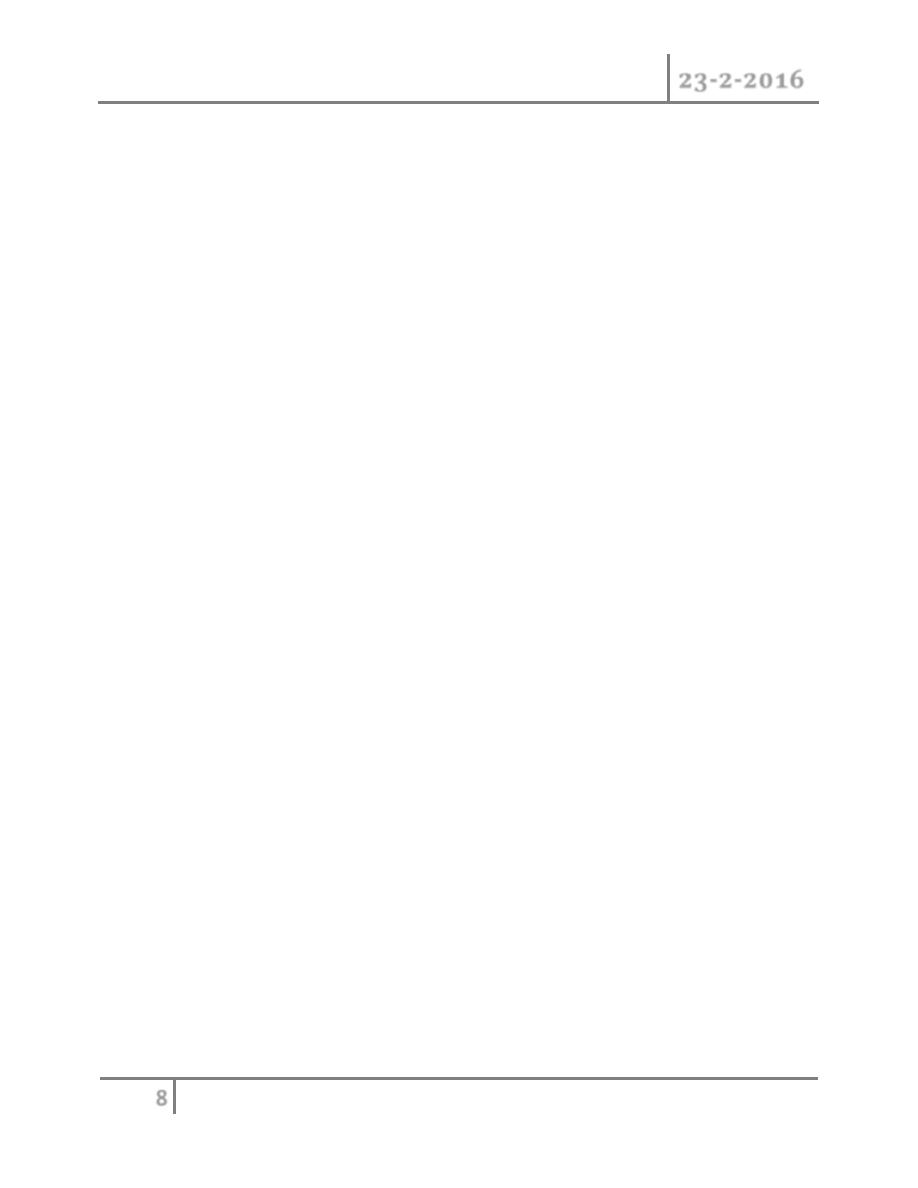
Thyroid Gland Dr.Tharwat Edrees
23-2-2016
8
©Ali Kareem 2015-2016
● Write on the postoperative complications of thyroid surgery ?
● Discuss the management of toxic multinodular goiter ?
● Write on each of the following :
A- Thyroglossal cyst B- Papillary CA of the thyroid gland
● Write short notes about the management of simple goiter ?
● Enumerate the various methods of treatment of toxic goiter ?
● What is the differential diagnosis of a solitary right thyroid nodule , write on the
methods of investigation to reach the diagnosis ?
● Enumerate only types of malignant thyroid gland tumors & discuss the
management of only one of them ?
END OF THIS LECTURE …
